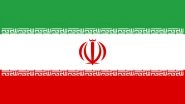WHO lauds India’s commitment to accelerated coverage of safe sanitation services which, assuming 100% coverage is achieved by October 2019, could avert up to 300 000 deaths due to diarrheal disease and protein-energy malnutrition (PEM) since the country launched the Swachh Bharat Mission in 2014.
As the initial results of a WHO modelling study on the health impact of the Swachh Bharat Mission Gramin (SBM-G) outline, India’s accelerated coverage of safe sanitation services, and its determination to end open defecation, will have a substantial effect on the burden of diarrheal disease and PEM by reducing mortality and accumulative Disability Adjusted Life Years (DALYs) – the sum of the years of life lost due to premature mortality and years lost due to disability or ill-health.
According to calculations, if all sanitation services are used, the initiative could result in over 14 million more years of healthy life in the period measured, with the benefits accruing yearly thereafter. That is especially remarkable given that before 2014 unsafe sanitation caused an estimated 199 million cases of diarrhea annually, with modelling showing the problem will almost be eliminated when universal use of safe sanitation facilities is achieved.
India’s commitment and progress towards these outcomes is reflected in the fact that household sanitation coverage has dramatically increased from an estimated 2% per year before the initiative to more than 13% annually between 2016 and 2018. The recent allocation of up to INR 15 000 crore as Extra Budgetary Resources for the SBM-G during the present financial year holds-out the potential for further gains, not only for India, but also the WHO South-East Asia Region and the world (globally, diarrheal disease is the second leading cause of under-five mortality, while lack of clean water and sanitation is also a major contributor to malnutrition).
Notably, the broader health impact of India’s commitment to accelerated sanitation coverage (which the present study does not consider) are likely to be significant. This includes improved overall nutritional status and reduced incidence of infectious diseases such as neglected tropical diseases and acute respiratory infections, as well as vector-borne diseases. Moreover, the estimations apply to the health impacts from improvements in sanitation coverage only, meaning it is possible that the broader Mission has produced additional health gains through changes in personal hygiene and the consumption of safe drinking water.
WHO has worked closely with the Government of India (GoI) to scale up access to sanitation services, including by providing technical assistance via India’s 2017 participation in the Global Analysis and Assessment of Sanitation and Drinking-Water Survey (a tool to provide policymakers actionable data to help inform sound policy), as well as working with partners to support the GoI implement WHO’s guidelines for safe water and sanitation planning. WHO has also supported the piloting of TrackFin (Tracking financing to sanitation, hygiene and drinking-water) in Rajasthan and West Bengal to utilize resources more efficiently to reach those under threat of being left behind.
That is especially important as India pursues WHO South-East Asia’s Flagship Priorities and strives to fulfill the Sustainable Development Goals, including Sustainable Development Goal 6, which obliges countries to ensure access to safe water and sanitation for all, and Sustainable Development Goal 3, which obliges them to ensure healthy lives and promote wellbeing for all at all ages. WHO commends India’s continued commitment and high-level resolve to these ends, and to achieving 100% safe sanitation coverage country-wide.
(This article has been contributed by Dr Poonam Khetrapal Singh, WHO Regional Director for South-East Asia)
(The above story first appeared on LatestLY on Aug 06, 2018 06:53 PM IST. For more news and updates on politics, world, sports, entertainment and lifestyle, log on to our website latestly.com).













 Quickly
Quickly


